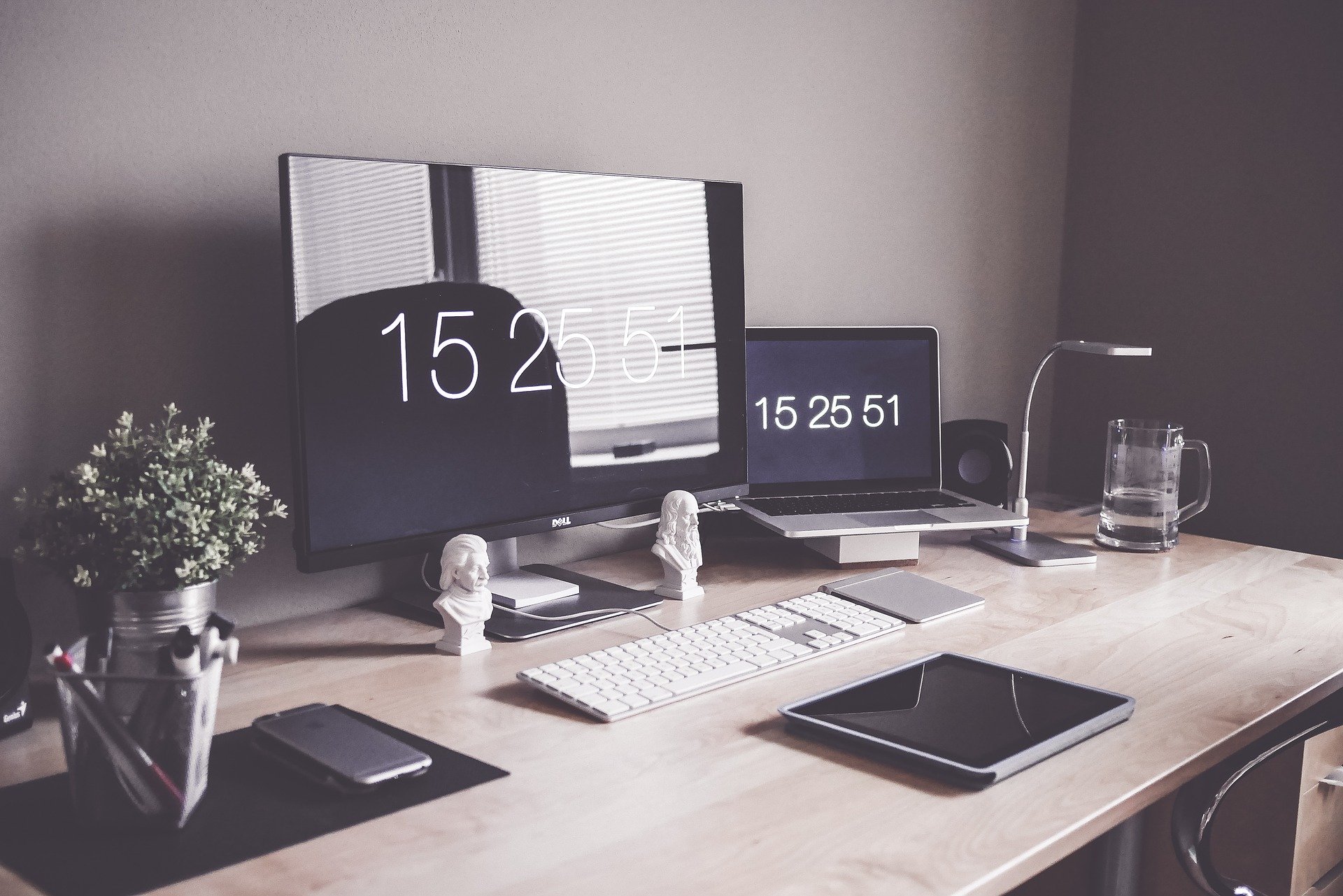Written by Hannah Segal and Edited by Kevin Liu

People are using electronics now more than ever, and remote learning for students through online conferencing and homework can mean spending hours on a device, which can cause eye strain. Screen time is formally defined as activities performed with the use of a screen, such as watching TV, working on a computer, or playing video games. It’s a sedentary activity—meaning one is being physically inactive and very little energy is being used [1]. As of 2018, according to the Nielsen Total Audience Report, almost 50% of an adult’s day is spent consuming media content. The Preventive Medicine Report suggests that screen time is a significant risk factor or a marker of mental disorders among U.S adults [2] [3]. Ultimately, too much screen time can lead to increased mental health and physical health risks.
Our eyes are continuously taking in various forms of light, most of which are blue light when looking at a screen. The visible light spectrum is made up of different colors: red, orange, yellow, green, blue, indigo, and violet light [5]. Each of these colors has a different energy level and wavelength, which are inversely related to each other. Blue light has shorter wavelengths, thus has higher energy, which means that it can pass through the lens of eyes easily until it reaches the retina, the location where images are formed [6]. Though blue light can be beneficial during the day since it boosts attention, reaction times, and one’s mood, research has shown that too much exposure to blue light can lead to retinal damage and digital eye strain [7] [8]. Researchers suggest that blue-light damages photoreceptors, which are sensory cells, in the eye’s retina. Prolonged exposure to blue light can lead to age-related macular degeneration, a leading cause of blindness [7]. Macular degeneration involves the progressive decline of vision with the dysfunction of the central retina, principally found in older adults [7]. However, in the short-term, blue light can contribute to fatigue, dry, sore and irritated eyes [9].
While it’s not realistic for students to be completely screen-free, there is no current consensus on how much screen time is too much for adults. Mayo Clinic has reported that the average person’s screen time ranges between 7-10 hours [10]. There are many ways to reduce screen time, or at least mitigate some of the effects, it can be as easy as putting your phone away when working. Engaging in activities that don’t require screen time such as family board games and learning new hobbies that don’t require the use of technology. Another way is to keep a limit or record of your screen time and set uniform breaks throughout screentime to put less strain on your eyes, even if it’s just a few minutes [4]. With prolonged screen time, the easiest way to limit exposure to blue light is to avoid using electronic devices at night. Adding a blue light filter to some gadgets can also reduce the amount of blue light transmitted and help reduce eye strain [9].
Works Cited
- “Screen Time and Children: MedlinePlus Medical Encyclopedia.” MedlinePlus, U.S. National Library of Medicine, 2019, medlineplus.gov/ency/patientinstructions/000355.htm. Accessed May 12, 2020.
- “Time Flies: U.S. Adults Now Spend Nearly Half a Day Interacting with Media.” Nielsen, 2018, www.nielsen.com/us/en/insights/article/2018/time-flies-us-adults-now-spend-nearly-half-a -day-interacting-with-media/. Accessed May 12, 2020.
- Schroder, Nina. “How to Reduce Screen Time in the Digital Age.” NAMI, 10 Aug. 2018, www.nami.org/Blogs/NAMI-Blog/August-2018-/How-to-Reduce-Screen-Time-in-the-Digital-Age. Accessed May 15, 2020.
- “Children and Media Tips from the American Academy of Pediatrics” American Academy of Pediatrics, June 1, 2020, https://www.aap.org/en-us/about-the-aap/aap-press-room/news-features-and-safety-tips/Pag es/Children-and-Media-Tips.aspx. Accessed May 11, 2020.
- Sanchez Ramos Celia, Garcia Manchado Nilo. Device and Method for the Detection and Quantification of Variation in Eye Damage Caused by Blue and Violet Light in the Visible Spectrum. 23 Sept. 2015.
- Zhao Zhi-Chun, Ying Zhao, Gang Tan, Juan Li. (2018) Research progress about the effect and prevention of blue light on eyes. International journal of ophthalmology 11:1999-2003,
- Nakamura Maho, Yako Tomohiro, Kuse Yoshiki, Inoue Yuki, Nishinaka Anri, Nakamura Shinuske, Shimazawa Masamitsu, Hara Hideaki. (2018) “Exposure to excessive blue LED light damages retinal pigment epithelium and photoreceptors of pigmented mice.” Experimental eye research. 177: 2018.07.022
- Behar-Cohen F, Martisons C, Vienot F, Zissis G, Barlier-Salsi A, Cesarini J P, Enouf O, Garcia M, Picaud S, Attia D. (2011) “Light-emitting diodes (LED) for domestic lighting: any risks for the eye?.” Progress in retinal and eye research 30: 2011.04.002
- “Blue Light and Your Eyes.” Prevent Blindness, 3 Apr. 2020, https://preventblindness.org/wp-content/uploads/2016/05/FS104_BlueLight_1.pdf. Accessed May 12, 2020.
- Bach, Margaret. “5 Tips for Reducing Screen Time.” 5 Tips for Reducing Screen Time – Mayo Clinic Health System, 24 May 2019, www.mayoclinichealthsystem.org/hometown-health/featured-topic/5-tips-for-reducing-screen-time. Accessed May 12, 2020.
